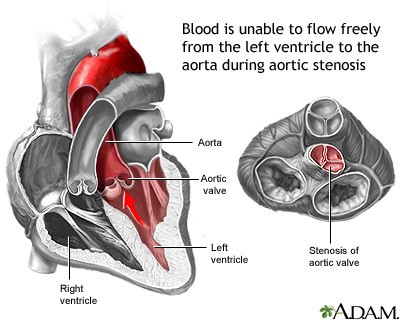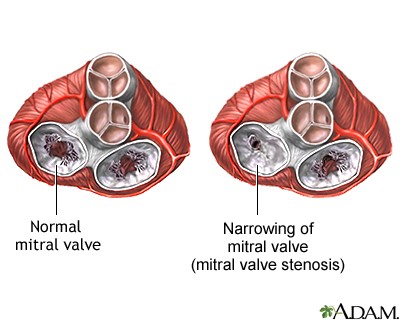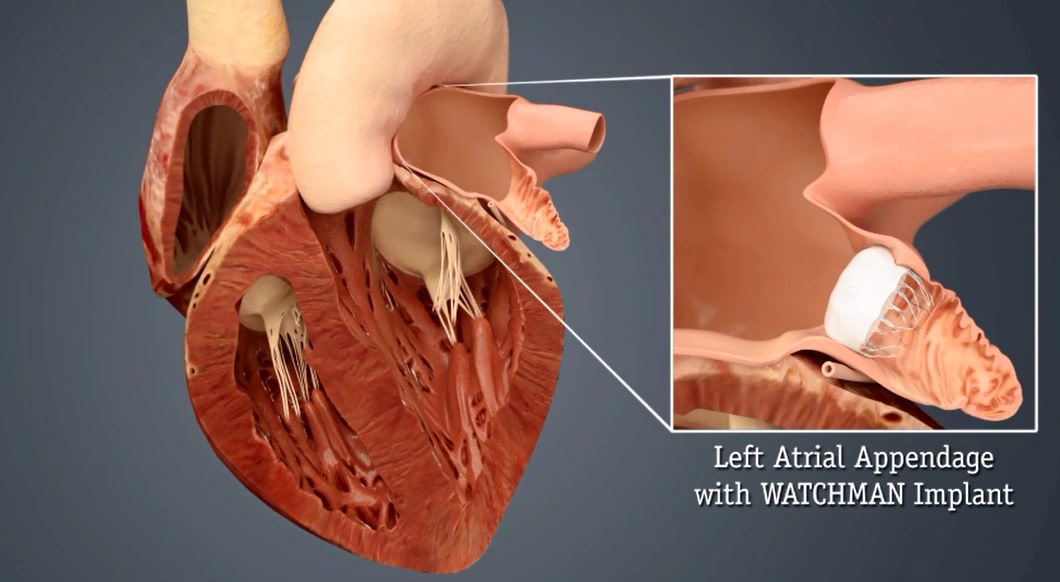Structural Heart Program
Carilion Clinic's Structural Heart and Valve Center provides specialized treatment, including evaluation, diagnosis and medical management, for patients with heart valve disease. We take a multidisciplinary approach to treatment, with every patient benefiting from the collaborative expertise o...
About
Your heart has four valves which regulate the flow of blood in and out. Heart valves can be defective at birth or can become diseased or weakened over time. Damaged valves may not open properly (stenosis) or may not close adequately (valve regurgitation, insufficiency or incompetence). Depending on how your health and activity level is affected, you may need to have a heart valve repair or replacement. Carilion is honored to be among the first hospitals in the nation and the only hospital in western Virginia able to treat certain patients with severe aortic stenosis with a new procedure called transcatheter aortic valve replacement (TAVR).
Valve problems may occur as a birth defect, as a result of calcium deposits, after an infection affecting the heart, or because of medications.
Symptoms of heart valve disease may include: shortness of breath, chest pain or pressure, swelling in your legs, ankles or abdomen palpitations, sudden, fast weight gain, or weakness or dizziness.
Aortic Regurgitation
A properly functioning aortic valve is like the door that allows blood to flow from the heart's left ventricle into the aorta and from there on to the brain and other organs. Aortic regurgitation occurs when some of the blood leaks back into the heart instead of traveling throughout the body. This backward flow of blood into the left ventricle slowly causes damage, stretching it out. There are many reasons for the aortic valve to become leaky, including a dilated aorta (aneurysm), age related degeneration, or complications of rheumatic fever. It can develop suddenly or over a long period of time.
Symptoms of aortic regurgitation include:
- Shortness of breath
- Swelling in the ankles
- Trouble breathing when laying flat
Tests used to diagnose aortic regurgitation include:
- Physical exam, to listen for a heart murmur during the relaxing phase of the cardiac cycle (diastole)
- Echocardiography, to identify the leaky aortic valve and measure the severity
- Transesophageal echocardiography, to clarify the reason for the leakiness of the aortic valve
- CT scan, to assess the size of the aorta
Treatment options for aortic regurgitation include:
- Aortic valve replacement
- Combined aortic root and valve replacement
- Medical management with medication to treat symptoms including diuretics to remove excess fluid
Aortic Stenosis

Aortic stenosis (hardening of the aortic valves) can be a problem that develops as the result of a birth defect or, more commonly, that occurs with age. It is harmful to your health in several ways. The heart has to work harder which can cause it to weaken. And, if blood doesn't flow easily through the narrowed valve it can build up in the heart chambers, sometimes even backing up into the lungs.
At Carilion our cardiovascular surgeons treat a high volume of patients with aortic stenosis and have the expertise to handle the most complex cases. We are proud to be one of the only hospitals in western Virginia that is able to treat patients with severe aortic stenosis with an effective, potentially life-saving minimally invasive procedure calledTrans-catheter Aortic Valve Replacement (TAVR), also referred to as TAVI (implantation). The catheter-based procedure avoids some of the risks associated with conventional surgical aortic valve replacement.
Symptoms of aortic stenosis include:
- Shortness of breath with exertion
- Chest pains/pressures with exertion
- Leg swelling
- Lightheadedness or loss of consciousness (syncope)
Tests used to diagnose aortic stenosis include:
- Physical exam, to listen for the characteristic heart murmur heard during the contracting phases of the cardiac cycle (systole)
- Echocardiography, a heart ultrasound test to measure the severity of the narrowing and look for problems with the other heart valves and the function of the pumping chambers.
- Heart catheterization, an invasive procedure used to evaluate the severity of the narrowing. This is done as a same day procedure in the cardiac catheterization.
- Transesophageal echocardiography, an invasive procedure looking at the heart with an ultrasound probe in the esophagus. This is typically done as a same day procedure with a heart catheterization.
Treatment options for aortic stenosis include:
- Open aortic valve replacement, which is considered the gold standard treatment for aortic stenosis, delivering excellent short- and long-term results
- Transcatheter aortic valve replacement/implantation (TAVR/TAVI), a new, less invasive treatment strategy reserved for high risk or inoperable patients
- Balloon aortic valvuloplasty, an alternative for patients without other options, this is a minimally invasive procedure that temporarily opens the valve, relieving the obstruction and improving symptoms
- Medical management with medications to treat symptoms of aortic stenosis, including diuretics to eliminate excess fluid
Mitral Regurgitation
A normally functioning mitral valve serves is like a door that allows blood to flow from the heart's left atrium into the left ventricle. Mitral regurgitation is the diagnosis made when this valve leaks as the heart is trying to send blood out to the body, resulting in the backward flow of blood into the top chamber (left atrium) and lungs. There are many reasons for the mitral valve to become leaky including myxomatous disease, infection, enlarged heart (cardiomyopathy), complication of rheumatic fever, and complication from a heart attack.
Symptoms of mitral regurgitation include:
- Shortness of breath
- Swelling in the ankles
- Trouble breathing when laying flat
Mitral regurgitation is diagnosed with:
- Physical exam to listen for a heart murmur during the contracting phase of the cardiac cycle (systole)
- Echocardiography, to identify the leaky mitral valve and measure its severity
- Transesophageal echocardiography to clarify the reason for the leakiness of the mitral valve
Treatment options for mitral regurgitation include:
- Mitral valve replacement, with either a tissue or mechanical valve
- Mitral valve repair, the optimal treatment for severe mitral stenosis because it allows preservation of the mitral valve support structures. Our surgeons will generally try to repair the valve if possible.
- MitraClip, a less invasive repair option we can offer some patients with severe mitral regurgitation who are interested in participating in the ongoing COAPT clinical trial
- Medical management with medications to treat symptoms to include diuretics to remove excess fluid
Mitral Stenosis

Mitral stenosis is a narrowing of the mitral valve (stenosis) that results in the back-up of blood into the top chamber (left atrium) of the heart. This can cause fluid in the lungs and irregular heart rhythms, such as atrial fibrillation. This valve problem typically occurs either as a result of age-related calcification or complications of rheumatic fever.
Symptoms of mitral valve stenosis may include:
- Waking up with difficulty breathing (most common symptom)
- Cough, possibly bloody
- Difficulty breathing during or after exercise or when lying flat
- Fatigue
- Frequent respiratory infections, such as bronchitis
- Heart palpitations
- Swelling of feet or ankles
- Chest discomfort/tightness (rare)
Mitral valve stenosis is diagnosed with:
- Physical exam, to listen for a heart murmur during the relaxing phase of the cardiac cycle (diastole)
- Echocardiography, to identify the narrowed mitral valve and measure the severity
- Transesophageal echocardiography to clarify the extent of the thickening of the mitral valve
- Cardiac catheterization, an invasive procedure used to evaluate the severity of the narrowing and to obtain accurate measurements of the pressures in the heart in order to determine the optimal treatment strategy
Mitral valve treatment options include:
- Mitral valve replacement
- Surgical commisurotomy, a procedure to open a blocked or defective mitral valve
- Balloon valvuloplasty, a procedure performed in the cardiac catheterization laboratory in which a balloon is inflated within the narrowed valve to open it up
- Medical management with medications to treat symptoms of mitral stenosis, including beta blockers to slow the heart rate and diuretics to remove excess fluid
Transcatheter Aortic Valve Replacement (TAVR)
At Carilion Clinic we're honored to be the first and only hospital in western Virginia able to treat patients with severe aortic stenosis (hardening of the aortic valve) with an effective, potentially life-saving new therapy, Trans-catheter Aortic Valve Replacement (TAVR). This is a ground-breaking treatment for patients with aortic valves that do not open properly, a condition that is known as severe aortic stenosis.
TAVR is a minimally invasive, first-of-its-kind, artificial heart valve replacement procedure. It requires no major surgery, making it a treatment option for many patients who are not candidates for traditional open heart surgery or for whom surgery would be especially risky.
For the thousands of Americans diagnosed with severe aortic stenosis each year who are unable to have traditional valve replacement surgery, TAVR procedure has the potential to not only improve the quality of life but to extend it.
After a patient has been evaluated in the Structural Heart and Valve Center, our multidisciplinary team meets to review each case individually to make a care plan and schedule the procedure.
Performed in our hybrid operating room, TAVR treatment essentially replaces a severely calcified heart valve with an artificial one. It requires no incision because the valve is sent to the heart via a catheter. There are currently three approaches to this surgery.
Currently, we are using the Edwards SAPIEN valve and the Medtronic CoreValve valve. The CoreValve has a much smaller delivery system, which has broadened our range of patients who can be treated less invasively with the TAVR procedure.
The Three Approaches of TAVR
Transfemoral transcatheter
This is the more commonly used approach in which the valve is inserted through an artery in the groin.
Transapical transcatheter
For patients who may not have adequate vascular access to accommodate during the transfemoral approach, the valve can be delivered through the apex of the heart by making a small incision between the ribs.
Transaortic (also called direct aortic)
This approach is also for patients who may not have adequate vascular access to accommodate a transfemoral approach. The valve can be delivered directly into the diseased aortic valve through a small incision made on the sternum.
All approaches are a minimally invasive procedure and similar to balloon angioplasty and stent placement treatments.
For more information on how TAVR can treat aortic stenosis, visit NewHeartValve.com.
To find out how Carilion Heart Valve Center can help you, or to see if you are a candidate for TAVR, please email us at heartvalvecenter@carilionclinic.org, or call 540-266-6846.
Candidates for TAVR
Depending on your overall health, you may not be able to undergo open-heart surgery for aortic stenosis. Carilion Clinic is proud to offer TAVR as an option for those patients who do not qualify for open-heart surgery due to high risk or being inoperable. Each patient will be assessed by our team of specialists, consisting of general cardiologists, interventional cardiologists, cardiothoracic surgeons, and cardiac anesthesiologists, prior to a treatment approach decision.
Characteristics of a TAVR Candidate
TAVR patients may present with some of the following:
- Severe, symptomatic native aortic valve stenosis
- History of syncope
- History of chest pain
- Shortness of breath
- Congestive heart failure
- Old age (patients are generally in their 80s and 90s)
- History of stroke
- Reduced ejection fraction
- History of afib
- Prior open chest/heart surgery
- Fatigue, slow gait
- Peripheral vascular disease
- Frailty
- Heavily calcified aorta
- Prior chest radiation
- History of coronary artery disease
- History of COPD
- History of kidney insufficiency
- Diabetes and hypertension
Screening and Patient Assessment
Patients undergo a series of screening tests to determine eligibility, risk assessment, and accuracy of valve measurement. Tests may include:
- Transesophageal echocardiography
- Coronary angiography and right heart catheterization
- Computed tomography (CT) scan of the aortic root and ilio-femoral arteries
- Pulmonary function tests
- Carotid ultrasound
- Edmonton frailty testing
- Five meter walk
- Kansas City Cardiomyopathy Questionnaire
For more information or to find out if you're a candidate for TAVR, please email us at heartvalvecenter@carilionclinic.org or call 540-266-6846.
WATCHMAN

Carilion Clinic is pleased to provide the WATCHMAN™ for patients whose atrial fibrillation (AFib) puts them at risk of stroke without blood thinners. The one-time procedure takes less than an hour under general anesthesia to seal the left atrial appendage (LAA) and prevent clots from escaping.
WATCHMAN is best for patients who have AFib that is not caused by a heart valve problem and who are intolerant to long-term blood thinning medications such as Warfarin due to high bleeding risk, history of bleeding, risk of falls or history of recurrent falls, intolerance to oral anticoagulation or other reasons.
The procedure is conducted under general anesthesia by inserting a catheter into a vein in the groin area and guiding it to the opening of the left atrial appendage. Once the device is in place, it expands to create a mesh barrier.
Most patients are able to return home the day after the procedure and discontinue Warfarin after 45 days. The WATCHMAN™ is left in place permanently, with heart tissue eventually growing over it.
For more information on WATCHMAN and how to connect to our office, click here.